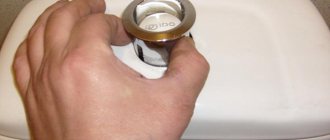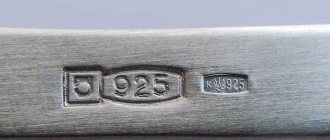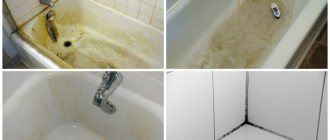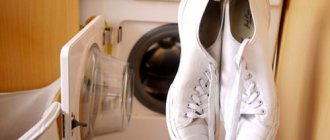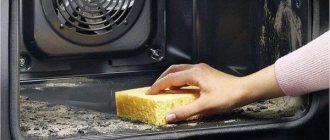For many people, cleaning their ears is a habit they have developed over the years. This simple manipulation seems as mundane as brushing your teeth. However, few people clean their ears correctly: information about this arises at a time when it is too late to do anything. Improper ear cleaning can lead to ear infections, hearing problems, eardrum damage, and even cardiac arrest.
Most ear diseases are associated with poor hygiene.
However, there is another position. Many experts say that you don’t need to clean your ears at home at all.
Do you even need to clean your ears?
It is believed that the ear is a self-cleaning organ. This is partly true: sulfur, which everyone is trying to remove as thoroughly as possible, actually has a protective function. It prevents infections, dust, and water from entering the ear canals. By removing sulfur, you destroy the protective barrier. In a healthy body, this substance should be released as much as needed, and its excess should flow into the ears and be washed away during the shower. However, under certain circumstances there is too much sulfur:
- infectious diseases;
- increased sweating;
- inflammatory processes in the middle ear;
- increased blood cholesterol levels;
- chronic stress, which increases the secretion of the ceruminal glands;
- constantly wearing headphones.
In addition, more sulfur is released in the hot season, in poor environmental conditions or in a large amount of dust in the room.
Where did the cork come from?
The more often we clean our ears, the more wax the cerumen glands secrete. This is necessary for protection. Over time, due to excess secretion of the sebaceous and sulfur glands, desquamated epidermis and disruption of its evacuation, a sulfur plug is formed. It can partially or completely close the lumen of the ear canal. The color of the wax plug may vary. Sometimes it is yellowish, sometimes it is dark brown. The consistency can be soft, dense and even rocky.
Indira Magomedova, otorhinolaryngologist at the MEDSI Clinical Diagnostic Center on Grokholsky Lane
The accumulation of sulfur is promoted by the anatomical feature of the ear canal (excessive tortuosity and narrowness), hyperfunction of the sulfur glands, increased viscosity, frequent inflammatory processes in the ear (chronic external otitis, dermatitis), as well as cleaning the ears using matches, hairpins and any other objects. The natural evacuation of wax is disrupted in headphones lovers, especially those with deep earbuds. Headphones close the lumen of the ear canal and push sulfur masses deeper into the bone section. Involvement with them irritates soft tissues. The result is sad - increased formation of sulfur and dermatitis.
Earwax can form in people who wear in-canal hearing aids or frequently use earmolds and earplugs. Other triggers include working in a dusty environment for long periods of time, low humidity in the home, or playing water sports.
How to clean a healthy person's ears
The ability of the ears to clean themselves does not mean that you can forget about hygiene. Quite the opposite: minimal and regular ear cleaning is necessary. The best way to proceed is as follows:
- When showering or washing your hair, rinse your ears and the area around your ears. At the same time, you should not stick your fingers into the ear canal, since your task is only to soften the wax as much as possible.
- Thoroughly wipe the inside of the ear with a towel or piece of cotton wool, removing any remaining dirt from all folds.
- Wrap your index finger in a cotton pad and use it to remove any remaining wax from the ear canal without pushing your finger deep inside.
Why shouldn't you use cotton swabs? They penetrate too deeply, even if it seems to you that you are in complete control of the process. In this case, the risk is not even that you can injure your eardrum, although such a danger should not be excluded. The thing is that you gradually push a small amount of sulfur inside. Every month more and more of it accumulates, it gets compacted and turns into a dense plug that must be removed.
Ear hygiene – forget about cotton swabs. Expert advice on how to properly care for your ears
Self-respecting manufacturers of these products even draw a crossed out ear on the packaging. But really, don’t walk around with dirty ears! Elena Kazmina, an otorhinolaryngologist at City Clinic No. 3 in Grodno, talks about how to correctly perform this necessary hygienic procedure.
Vata is to blame
– Cleaning your ears with a cotton swab is the worst thing you can do. Each of us definitely has a comb, a toothbrush, a handkerchief, but you won’t read anything about special ear swabs (not to mention matches, knitting needles, hairpins, pins). in one hygiene guide. Patients often come to see us with a punctured eardrum. In most cases, it turns out that the person caused the injury to himself when he cleaned his ears too hard, including with cotton swabs. And when you find out the details, it becomes clear that many simply do not know how to do it correctly,
– says Elena Kazmina and adds that under no circumstances should you clean your ears with cotton swabs.
This injures the skin of the ear canals, provokes infection and inflammation there; the wax plug is not cleaned out, but, on the contrary, is pushed inside the ear canal. The most dangerous consequence is the formation of a hole in the eardrum. In addition, constant mechanical irritation of the ear canal leads to increased function of the sulfur glands and increased production of sulfur.
Why do we need earwax?
Earwax is far from a useless ear pollutant. It is produced by sulfur glands, which are located in the external auditory canal to protect the eardrum from various environmental pollutants. Dust and dead cells stick to it well. Thanks to a pH of 5, earwax has antifungal and antibacterial properties. In its absence, there is a feeling of dryness and itching in the ears, and the risk of infection increases.
Purely without strangers
Healthy ears can be cleaned perfectly without our help. The process of self-cleaning of the ear canals occurs during natural activities - when we chew, talk or cough. This is facilitated by the movements of the temporomandibular joint, which is located next to the anterior wall of the external auditory canal.
– In some people, the removal of earwax is impaired and then a cerumen plug forms. Increased secretion of sulfur glands, narrowness of the ear canals, frequent use of headphones, as well as improper ear cleaning can lead to the accumulation of sulfur.
- says the specialist.
How to properly clean your ears yourself
Doctors are convinced that normally the ears do not require special care. It is enough to periodically wash the vestibules of the ear canals with warm water and soap and wipe with a soft towel. There is no need to clean the inside of the ear.
If there is increased secretion of the sulfur glands, then it is necessary to consult with a specialist and, for prevention, use special drops prescribed by the doctor twice a month.
Professional "cleaning"
If a traffic jam does form, you need to make an appointment with an otolaryngologist. Most often, wax plugs are washed out with a strong stream of water supplied into the ear canal from a special Janet syringe. To make the wax plug easier to wash out, before visiting the doctor, you can drip 3 percent hydrogen peroxide into your ear for five minutes three times a day or regular vegetable oil. However, do not be alarmed if your hearing deteriorates. When peroxide is instilled, the sulfur plug swells, but after it is removed by an ENT doctor, hearing will be restored.
How to remove wax plug
The presence of wax plugs in the ears can only be diagnosed by an otolaryngologist. You should pay attention to some symptoms: constant tinnitus, pain in the ears, a feeling of fullness, a feeling of your own voice recoil during speech. If you observe such manifestations, most likely you have traffic jams, but it is still advisable to visit an ENT specialist to make an accurate diagnosis.
Under no circumstances use folk recipes (onion juice, garlic, herbal decoctions) to clean ear plugs. This can lead to burns of the mucous membrane, inflammation and other complications.
Sulfur plugs can have the consistency of plasticine or be hard as a rock. In the latter case, inflammatory processes may occur in parallel, so such a plug should under no circumstances be removed independently.
The main method for removing wax plugs is softening and washing out. For 2-3 days, you should put one of the medications prescribed by your otolaryngologist into your ears. The rinsing itself is carried out in a hospital: the softened sulfur mass is actually washed out of the ear cavity with the help of liquid.
The need to remove wax plugs should only be determined by a doctor.
If you have a small wax plug, your doctor may allow you to get rid of it at home. To do this, you should limit yourself to just instilling it into your ears (soda solution, hydrogen peroxide, or a ready-made medication), after which the plug will come out of the passage itself in the coming days.
Cleaning ears with wax plugs
People most often come to an otolaryngologist with complaints about earwax. In this case, patients experience hearing impairment, the cause of which is clogging of the ear canal with sulfur. The substance contains a lubricating secretion of glands and keratinized epithelial particles.
Often, a noticeable decrease in the ability to perceive sounds is observed after taking water procedures, swimming, when water gets into the ears. The cause of aching or sharp “shooting” pain is swelling of the conglomerate. If you have pain symptoms, you should contact a medical facility as soon as possible; you should not try to clear wax from your ears on your own, as this can lead to the development of complications.
How to clean your child's ears
If for an adult proper ear hygiene quickly becomes a habitual manipulation, then a child needs a special approach in this matter. The main principle is that less is better. A caring mother often examines her baby’s ears and hurries to remove all the accumulated wax. Of course, you can't do that.
According to the observations of pediatricians, more than 50% of childhood otitis media are associated with ear injuries during their cleansing by parents.
Children's cotton swabs (with an enlarged soft tip) should also be used with caution, do not screw them in or rub them too hard. After bathing, it is enough to carefully apply the stick to the ear canal and allow the soaked dirt to be absorbed.
In both children and adults, the main natural mechanism for removing wax from the ears is the movement of the jaws. This is why too much wax can accumulate in a baby: intensive breast or bottle sucking intensifies the process. But even this is not a reason to clean the ears too diligently: in the first 1-2 years of the baby’s life, try to reduce this procedure to a minimum.
Methods for removing an ear plug
You need to know that you can safely get rid of a “clog” in your ear only in a medical facility. The specialist will examine the ear canal, study the patient’s complaints and be able to make a diagnosis. When examining an organ, doctors use a light source (flashlight) and a special funnel.
To remove earwax and get rid of congestion, doctors in modern clinics use two methods:
- “Wet” is a common technique in which a syringe or a nozzle from an ENT combine is inserted into the ear canal, into which liquid is supplied under pressure. The conglomerate is washed out.
- “Dry” - the doctor works with a tiny hook, grabbing and pulling out lumps in parts. The procedure is carried out without wetting the canal. It is necessary to constantly monitor the process, act with extreme caution and have high qualifications. Any sudden movement can damage the eardrum.


